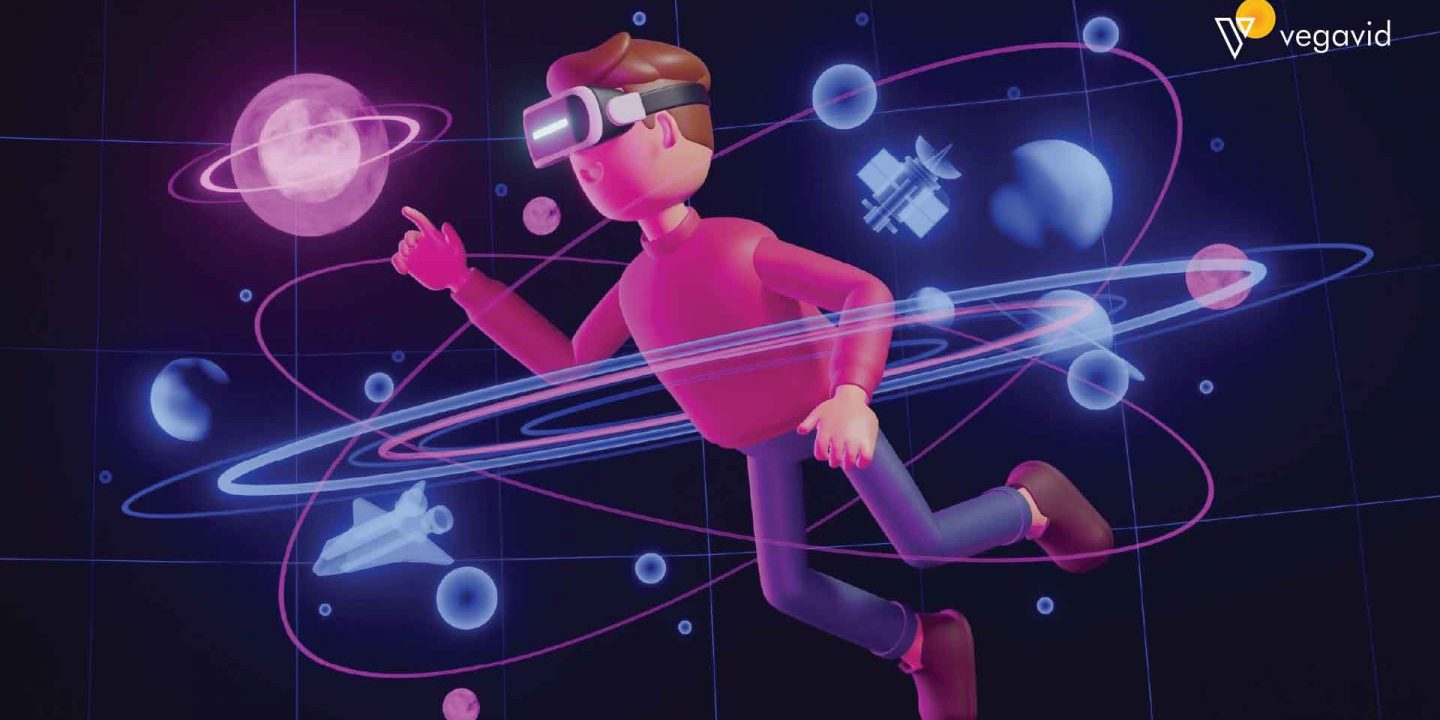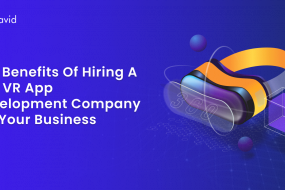
The Metaverse, which combines virtual reality, augmented reality, and the internet, has taken the tech world by storm. However, developing an immersive and realistic Metaverse comes at a considerable cost. The factors that affect Metaverse development costs include the features, technologies used, team size, and infrastructure requirements. Estimates show that Metaverse solutions for industries like gaming, social media, and real estate can cost anywhere from a few hundred thousand dollars to hundreds of millions. To develop an effective Metaverse, businesses must select the right platform, design the virtual environment, enable user interactions, and incorporate interoperability. In this blog, we will explore the factors that determine Metaverse development costs and provide industry estimates.
Factors that affect the cost of Metaverse development
Here are the key factors that affect the cost of Metaverse development:
Metaverse features
The core features and functionality of the intended Metaverse greatly impact the development costs. More complex and realistic features generally correspond to higher expenses. Some of the most important features that affect Metaverse development costs are- 3D graphics, VR/AR compatibility, real-time physics engines, AI agents, data streaming, simulation of natural phenomena, and virtual assets. Photo-realistic 3D graphics are essential for an immersive Metaverse but are also expensive to develop. VR/AR compatibility requires additional engineering to support multiple devices and input methods.
Complex simulations using physics engines and AI to model natural behaviors increase resource demands. Data streaming is needed for sharing updates between users in real-time but imposes a high network load. Virtual assets like environments, objects, and avatars need to be easily customizable and editable. As the number and sophistication of features increase in the Metaverse, so do the costs in terms of development effort, technical challenges, team size, and infrastructure requirements.
Metaverse tech stack
The technology stack chosen to build the Metaverse significantly impacts the development costs. Proprietary platforms like Unity and Unreal Engine are capable of growing excessive constancy pics and realistic simulations however require paying royalties and license costs. This can upload significantly to costs. On the alternative hand, open-source structures like Mozilla Hubs and Spatial have lower in advance charges but regularly lack advanced features. The choice of programming languages and SDKs also affects prices.
Low code structures based on JavaScript and blocky languages allow quicker improvement however provide less customization. On the alternative hand, C and Rust provide higher overall performance and control on the fee of a longer improvement cycle. Other tech choices like the game engine, VR/AR SDKs, AI/ML libraries, networking frameworks, databases, and storage additionally have an impact on the complexity, time, and sources required. Hence, cautiously evaluating the alternatives for 3-d portraits, simulation, programming gear, AI, networking and records garage is essential to decrease development expenses at the same time as making sure the Metaverse meets useful requirements.
The team required to build the Metaverse platform
Building an immersive and sturdy Metaverse requires a multi-disciplinary crew of professionals with numerous capabilities and information. The length and composition of the improvement team immediately impact fees. A large group with greater specialists commonly interprets better hard work fees.
The core team could consist of software program engineers proficient in the chosen programming languages, recreation engine builders, VR/AR engineers, AI/ML specialists, and full stack builders. Other critical roles are 3D artists to create a virtual property, designers to craft the person experience, animators to bring objects and avatars to life, testers for pleasant control, and assignment managers to oversee improvement.
Specialist roles like simulation engineers, physics programmers, networking architects, and statistics scientists can also be needed relying on the particular Metaverse capabilities. Hiring experienced experts in VR/AR and game improvement commands a top class and similarly drives up expenses. Outsourcing elements of the development to specialized firms can assist limit crew length even as making sure availability of niche talents. However, communication overhead and costs for outsourced work also need to be factored in.
Industry-wise Metaverse development cost estimates
Here are some industry-wise Metaverse development cost estimates:
Online gaming
The cost of developing an online gaming metaverse varies significantly based on its complexity, features, and scale. A basic 3D multiplayer gaming metaverse with support for VR headsets can be developed for around $500,000 to $1 million. This includes costs for a small development team, 3D game engine license, asset creation, and initial infrastructure.
More advanced online gaming metaverses with complex physics-based simulations, realistic graphics, and artificial intelligence can cost between $5 million to $10 million to develop. This requires a larger team of VR/AR developers, simulation experts, 3D artists, and support staff. Licensing fees for VR hardware and game engines also increase considerably.
The most immersive social gaming metaverses that aim to recreate a virtual world for players to inhabit cost upwards of $10 million to develop. These require photorealistic graphics, massive virtual worlds, AI-driven animations, and interactions, support for thousands of simultaneous users, and extensive cloud infrastructure. The development teams can number in the hundreds and costs for content creation and maintenance also rise steeply.
Social media
The cost of growing a social media metaverse varies widely based totally on its complexity and scale. A simple text-primarily based social metaverse in which users have virtual profiles and can chat with each different can be evolved for around $1 million to $2 million. This includes costs for a small group of builders, fundamental three-D avatar and environment introduction, and initial infrastructure.
A fully-fledged social media metaverse in which users have image-practical avatars that can attend virtual activities and proportion live streams may want to cost between $50 million to $one hundred million to expand. This would require a huge team of 3-d artists, VR/AR builders, AI and ML experts, picture designers, and a guided group of workers. Costs for licensing advanced game engines and virtual conferencing tools would additionally be excessive.
The most complicated company social metaverses that goal to recreate a whole digital workplace for employees may want to exceed $100 million to broaden. They could function as virtual offices, interactive meeting rooms, AI assistants, and the ability to collaborate in actual time throughout the metaverse. The development groups for such solutions may be inside the heaps and prices for ongoing protection, updates, and cloud infrastructure might be extraordinarily high.
Real estate
The cost of growing an actual estate metaverse can vary extensively depending on its functions, scope, and complexity. A simple digital real property metaverse that permits customers to browse virtual homes and tour 3-d walkthroughs can be evolved for around $2 million to $five million. This consists of expenses for a small crew of builders, 3-d artists to create virtual houses and environments, and preliminary infrastructure.
An advanced real property metaverse that allows customers to customize and beautify digital homes with interactive furnishings and appliances ought to price between $20 million to $50 million to broaden. This could require a larger team of VR/AR builders, 3-D interior architects, and AI retailers to assist customers and aid personnel. Costs for licensing superior game engines could also increase.
The maximum immersive actual estate metaverses that aim to recreate complete virtual neighborhoods and cities for residents to socialize should exceed $one hundred million to develop. They could feature picture-practical images, complicated simulations of herbal factors, self-using cars, and the ability for users to regulate properties at will. The improvement groups for such solutions are massive and expenses for ongoing website hosting, preservation and updates of the unexpectedly expanding digital world might be high.
How to develop the Metaverse?
Here are the steps to develop an effective Metaverse:
Select the Metaverse platform
The first step to developing an effective Metaverse is choosing the right platform and core technologies. Businesses must decide between game engines like Unity and Unreal Engine or open-source options like Spatial, Mozilla Hubs, and Decentraland. Proprietary platforms provide advanced tools but require licensing fees while open-source options have lower initial costs but lack certain features. Other considerations include device support, features required, developer expertise, and long-term costs. The selected Metaverse platform lays the foundation for all subsequent development and scaling.
Design the virtual space
Once the Metaverse platform is selected, developers must design the virtual space that users will inhabit. This includes creating 3D environments, objects, avatars, and the user interface. Developers design the layout of the virtual worlds, buildings, landscapes, and important locations within the Metaverse. They create multiple 3D assets ranging from simple props to complex structures. Avatars for users are also designed to be diverse and customizable. The entire virtual space is crafted to be visually appealing, and intuitive and match the themes of the Metaverse.
Build the interaction layer
After designing the virtual space, developers must implement the ways users will interact within the Metaverse. This involves building an interaction layer supporting inputs like gestures, voice commands, tracking of body movements, and eye gaze. Users need basic interactions like walking, sitting, grasping, and manipulating virtual objects. For realism, developers integrate physics engines to simulate interactions between virtual objects. Advanced interactions using AI agents and virtual assistants can also be enabled. The interaction layer bridges the gap between the virtual and physical worlds for users.
Build the interoperability layer
To allow virtual assets and data to move between different Metaverses, an interoperability layer needs to be constructed. Developers build standards and protocols to enable connection and communication between diverse Metaverse platforms. This allows virtual objects, avatars, payments, and other information to be seamlessly ported between Metaverses. Standards for item descriptions, asset formatting, and application programming interfaces are defined to facilitate interoperability. The interoperability layer is crucial for a truly unified and interconnected Metaverse experience for users where their virtual items can move with them anywhere.
Conclusion
In conclusion, the cost of developing a robust Metaverse depends on a variety of technical, human, and infrastructure factors. The more complex, interactive, and realistic features businesses seek to incorporate, the higher the development costs generally are. However, simple gaming and social media Metaverses can be built at a relatively lower expense to test feasibility. To minimize costs, businesses must carefully choose the Metaverse platform, optimize the tech stack and manage development team sizes. Continual monitoring, testing, and improvements after launch also help reduce long-term costs. While developing the Metaverse at scale involves a significant investment, the potential opportunities it presents make the costs worthwhile for innovative businesses.











